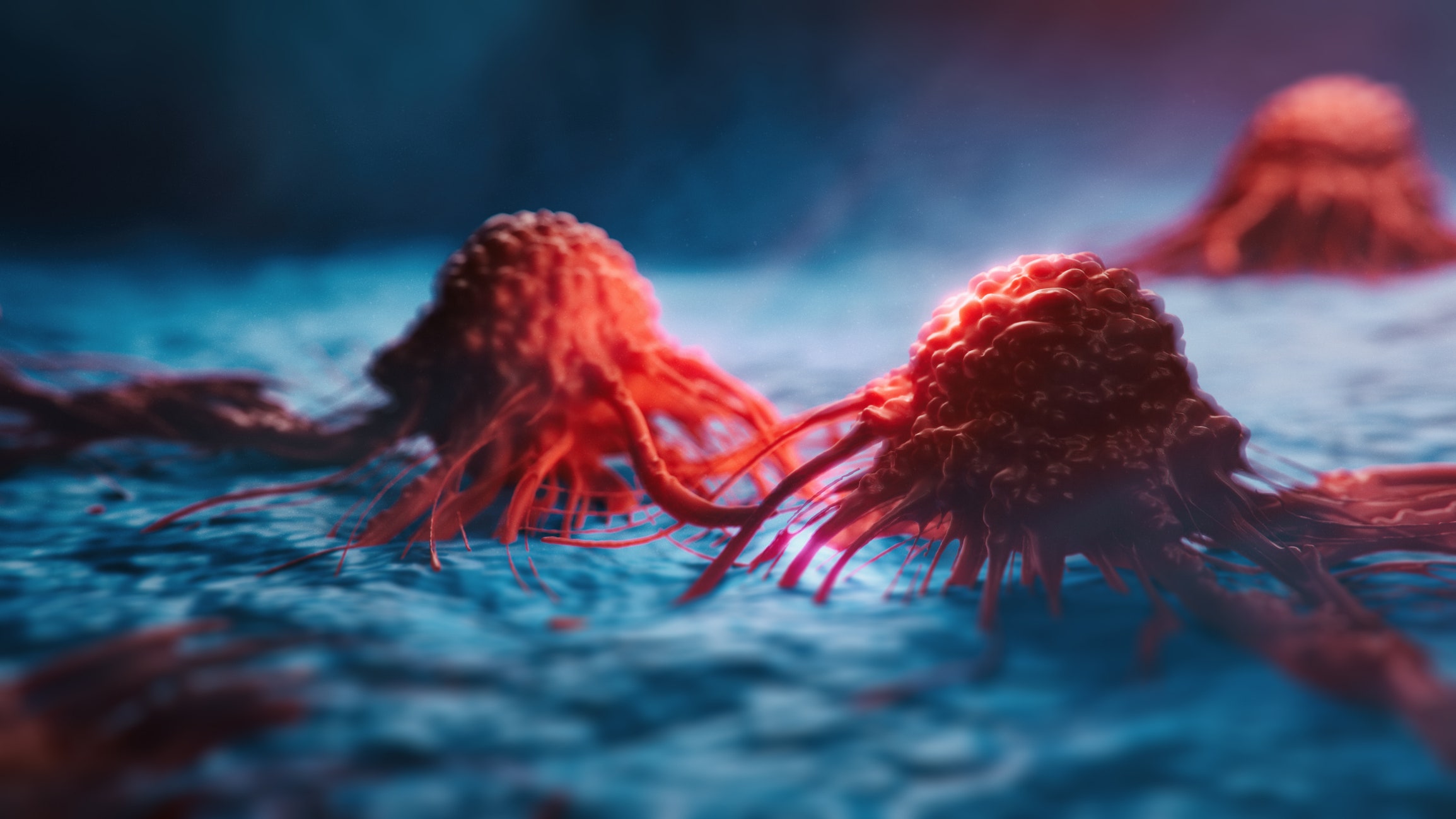To make the perfect scoop of ice cream, you first need a dairy base—its natural proteins, fat, and sugar provide the rich, distinct mouthfeel. Heavy cream is added, further smoothing the texture. The introduction of sugar isn’t just for sweetness: like scattering salt on snow, it lowers the freezing point, minimizing ice formation. Flavoring can now be brought to the mix, from the quintessential (chocolate chips or vanilla pods) to the more daring (spices, salt, or booze).
This recipe takes you just under halfway to the ideal dollop. Next is the 0.5 percent of emulsifiers and stabilizers added to the liquid, helping the water content and fats stick together. The mix is homogenized, then cooled and aged for 24 hours at 5 degrees Celsius (40 Fahrenheit), for an even richer, smoother taste before it’s frozen.
The cooling system inside a continuous freezer, where the ice cream is scraped inside a large cylinder.
Photograph: Tuala Hjarnø
Then comes the secret ingredient. “We sell air,” says Elsebeth Baungaard Andersen, product manager at Swedish multinational food packaging and processing company Tetra Pak. “Half the volume of your favorite tub of ice cream is air. But it’s those air bubbles and whipped texture that provide the special mouthfeel as it melts in your mouth, releasing the delicious flavor.”
At Tetra Pak’s Product Development Center in Aarhus, Denmark—a lab for the biggest and smallest ice-cream brands to test and taste their latest experiments—air is a precious, invisible commodity. During the freezing stage, in which the mix is cooled to -5 degrees Celsius (23 Fahrenheit) inside a rotating cylinder, the dasher’s scraper knives not only scoop out frozen batches of the good stuff, they also whip in air. Stabilized by fat globules and proteins, air bubbles create that soft, familiar, luxurious feel. “We have to be so precise with our dosing,” says Baungaard. “Ice cream is a science: Too much air and it’s frothy, too little air and it’s hard to scoop and eat.”
The exact dosage depends on the recipe: the lower the overrun—that is, the percentage by which the air increases the mixture’s volume—the more premium the product. An artisanal gelato has a denser texture—its overrun may be just 20 percent. Budget supermarket ice-cream may have an overrun even exceeding 100 percent.
This is just some of the complex chemistry involved in making the world’s favorite dessert. Tetra Pak may be more famous for its packaging, but it takes a sizable scoop of the estimated $113 billion ice cream industry: Each of its continuous freezers pumps out 4,000 liters every hour, typically for small producers looking to scale. Besides tubs, its production lines churn out 2 million ice-cream sticks every day. Major clients also use its Aarhus facility to trial new concepts. (“We’re in the Silicon Valley of ice cream,” says Andersen.)
Tetra Pak ice cream engineers have indeed innovated the industry: In the late 1980s, its technology meant ice cream could be extruded on a stick at a cooler temperature, meaning more air bubbles, creating a more premium taste. The product became the Magnum Classic. Today, collaborative robots (or cobots) ensure there’s no generous overfilling of portions on the factory floor—and that each scoop has an equal amount of sauce. Their human colleagues, meanwhile, test new prototypes via 3D printers.
A breakthrough in the ice cream industry, says Sampson Anankanbil, ingredients application specialist at Tetra Pak, has been the development of heat-shock-resistant ice cream, ideal for transporting tubs to distribution centers and beyond, particularly in hot climates. Stabilizing solutions create a cryogel, so when ice crystals melt, it mops up excess water—the ice cream melts more slowly, and the eating quality remains.
Ice-cream molds are filled, then dunked in cold brine to solidify the contents.
Photograph: Tuala Hjarnø
The next frontier is about creating a plant-based scoop that’s as good as its dairy counterpart. Lacking the same natural fat, texture, and richness of flavor, it’s the Holy Grail of ice cream. In the name of sustainability, Andersen and Anankanbil believe that “hybrid” ice cream, combining both proteins into a single product, is the future of the industry. Tetra Pak is exploring fava beans (also known as broad beans) as a potential solution. “We don’t want to compromise on indulgence,” says Anankanbil. “But we see that it has a very good profile, flavor, and clean taste compared to other vegan protein sources.”
While Tetra Pak has slowed the melting process, it has no interest in eliminating it altogether. That scoop of chocolate gelato in a cone—steadily dripping down your arm on your summer vacation—is going nowhere. “Ice cream is surprisingly complex,” says Anankanbil. “It has air, fat, and ice crystals in a frozen state, then all these ingredients come together in your mouth in an unfrozen state—melting is what releases the flavor.”
This article appears in the November/December 2024 issue of WIRED UK magazine.



